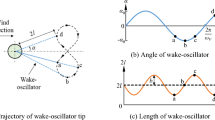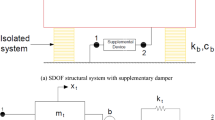Abstract
Time-domain approaches are presented for analysis of the dynamic response of aeroservoelastic systems to atmospheric gust excitations. The continuous and discrete gust inputs are defined in the time domain. The time-domain approach to continuous gust response uses a state-space formulation that requires the frequency-dependent aerodynamic coefficients to be approximated with the rational function of a Laplace variable. A hybrid method which combines the Fourier transform and time-domain approaches is used to calculate discrete gust response. The purpose of this approach is to obtain a time-domain state-space model without using rational function approximation of the gust columns. Three control schemes are designed for gust alleviation on an elastic aircraft, and three control surfaces are used: aileron, elevator and spoiler. The signals from the rate of pitch angle gyroscope or angle of attack sensor are sent to the elevator while the signals from accelerometers at the wing tip and center of gravity of the aircraft are sent to the aileron and spoiler, respectively. All the control laws are based on classical control theory. The results show that acceleration at the center of gravity of the aircraft and bending-moment at the wing-root section are mainly excited by rigid modes of the aircraft and the accelerations at the wing-tip are mainly excited by elastic modes of the aircraft. All the three control schemes can be used to alleviate the wing-root moments and the accelerations. The gust response can be alleviated using control scheme 3, in which the spoiler is used as a control surface, but the effects are not as good as those of control schemes 1 and 2.
Similar content being viewed by others
References
Wen C Y. Modern Flight Control. Beijing: BUAA University Press, 2004. 181–192
Karpel M, Moulin B, Chen P C. Dynamic response of aeroservoelastic systems to gust excitation. J Aircraft, 2005, 42: 1264–1272
Wu Z G, Yang C. Investigation on active flutter suppression and gust alleviation for an active aeroelastic wing. J Mech Strength, 2003, 25: 32–35
Chen L, Wu Z G, Yang C, et al. Active control and wind tunnel verification of multi-control surfaces wing for gust alleviation (in Chinese). Acta Aeronautica et Astronautica Sinica, 2009, 30: 2250–2256
ZAERO. Software package. ZONA Technology Inc., Scottsdale, 2008
Burris P M, Dempster J B. Flight testing structural performance of the LAMS filight control system. AIAA 68-244, 1968
Disney T E. C-5A active load alleviation system. J Spacecraft, 1977, 14: 81–86
Karpel M, Moulin B. Active alleviation of gust loads using special control surfaces. AIAA 2006-1833, 2006
Karpel M, Moulin B, Presente E, et al. Dynamic gust loads analysis for transport aircraft with nonlinear control effects. AIAA 2008-1994, 2008
Azoulay D, Karpel M. Characterization of method for computation of aeroservoelastic response to gust excitation. AIAA 2006-1938, 2006
Kattan P I. Finite Element Analysis and Application in Matlab. Beijing: Tsinghua University Press, 2004. 159–182
Dario H, Baldelli P C. Unified rational function approximation formulation for aeroelastic and flight dynamics analysis. AIAA 2006-2025, 2006
Mukhopadhyay V. Flutter suppression control law design and testing for the active flexible wing. J Aircraft, 1995, 32: 45–51
Jan R W, Jonathan E C. Introduction to Aircraft Aeroelasticity and Loads. Antony Rowe Ltd, Chippenham, Wiltshire, 2007
Mack M D, Seetharam H C, Kuhn W G, et al. Aerodynamics of spoiler control devices. AIAA 79-1873, 1979
Sun X D, Woodgate K G, Allwright J C. Nonlinear inverse dynamic control of aircraft using spoilers. AIAA 94-3592-CP, 1994
Destuynder R. Multi-control system in unsteady aerodynamics using spoilers. AIAA 87-0855, 1987
Gao J Y, Zhang D F. Gust load alleviation control system scheme research for civil airplane (in Chinese). In: Chinese Society of Aeronautics and Astronautics 2007 Annual Conference, airborne and avionics part, Beijing, 2007
Author information
Authors and Affiliations
Corresponding author
Rights and permissions
About this article
Cite this article
Wu, Z., Chen, L., Yang, C. et al. Gust response modeling and alleviation scheme design for an elastic aircraft. Sci. China Technol. Sci. 53, 3110–3118 (2010). https://doi.org/10.1007/s11431-010-4141-y
Received:
Accepted:
Published:
Issue Date:
DOI: https://doi.org/10.1007/s11431-010-4141-y




